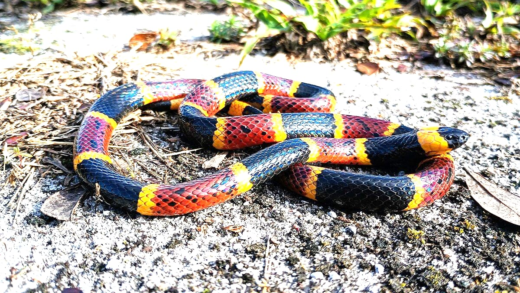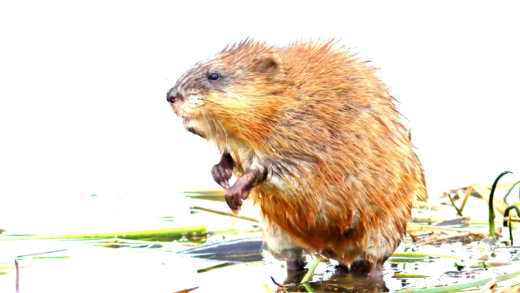The article explores the largest lizards in the world, their habitats, behaviors, and conservation status. It highlights the unique features of big lizards, their diets, hunting behaviors, and roles in ecosystems. Additionally, it covers safe observation tips and debunks common myths about these reptiles.
Meet the Giants: The Largest Lizards in the World
The largest lizards in the world include impressive species like the Komodo dragon, the Asian water monitor, and the Nile monitor. These magnificent reptiles can reach lengths of up to 10 feet (3 meters) and weigh over 300 pounds (136 kg). The Komodo dragon, for instance, is not just the biggest lizard; it’s also a formidable predator. Found on a few Indonesian islands, it hunts deer, birds, and even water buffalo. Their size gives them a unique advantage in the wild.
Another giant, the Asian water monitor, thrives in Southeast Asia’s wetlands, showcasing incredible adaptability. These lizards are excellent swimmers and often hunt for fish, crabs, and even small mammals. Meanwhile, the Nile monitor, native to Africa, can be aggressive and territorial, often preying on birds and small mammals.
Each of these lizards exhibits unique characteristics and behaviors that highlight their status as the largest lizards in the world. Understanding these giants is crucial for appreciating their role in ecosystems and the challenges they face in the wild.
Size Comparison: How Do They Stack Up Against Cats and Dogs?
When visualizing the size of the largest lizards in the world, comparing them to familiar pets like cats and dogs can be quite enlightening. For example, an average domestic cat weighs around 10 pounds (4.5 kg) and measures about 18 inches (46 cm) long, while a large dog might weigh between 50 to 100 pounds (22 to 45 kg) and stand about 2 feet (61 cm) tall at the shoulder.
Now, consider the Komodo dragon again. With its typical length of 8 to 10 feet (2.4 to 3 meters), it dwarfs both cats and most dogs. Imagine a dog that could stretch out as long as a couch! The Asian water monitor is similarly impressive, often reaching lengths of 5 to 7 feet (1.5 to 2.1 meters). This comparison helps highlight just how significant these lizards are compared to the pets we’re used to.
Such size differences not only fascinate but also underscore the ecological niches these lizards occupy, showcasing their adaptations and hunting strategies that help them thrive in their environments.
Homes Sweet Homes: Preferred Habitats of Big Lizards
The preferred habitats of big lizards vary significantly based on species. The Komodo dragon prefers dry savannas and tropical forests, where it can easily hunt and bask in the sun. In contrast, the Asian water monitor is commonly found in wetlands, rivers, and coastal areas, thriving in both terrestrial and aquatic environments.
- Komodo Dragons: Dry savannas and tropical forests.
- Asian Water Monitors: Wetlands, rivers, and coastal areas.
- Nile Monitors: Riparian zones and savanna grasslands in Africa.
Each of these habitats provides essential resources like food and shelter, crucial for the survival of these large lizards. For instance, the wetlands of Southeast Asia not only offer abundant food sources but also protection from predators. Understanding where these lizards live helps in conservation efforts and highlights the importance of preserving their natural environments.
Unique Features: What Makes Each Big Lizard Special?
The largest lizards in the world possess a variety of unique features that distinguish them from other reptiles. For example, the Komodo dragon is known for its powerful bite and venomous saliva. This lizard has sharp teeth and a keen sense of smell, which it uses to track down prey. Its remarkable size is complemented by its tough, scaly skin, providing both protection and camouflage in its natural habitat.
On the other hand, the Asian water monitor has exceptional swimming abilities. Its long, flattened tail acts as a propeller, allowing it to move swiftly through water. Additionally, this lizard has a strong sense of sight, helping it spot prey from a distance. Meanwhile, the Nile monitor showcases a robust body and strong limbs, which enable it to climb trees and hunt birds effectively.
Understanding these unique characteristics is essential for appreciating how large lizards adapt to their environments and survive. These adaptations play a crucial role in their hunting strategies, defense mechanisms, and overall existence in the wild.
Dining Delights: How Do Their Diets Vary?
The diets of large lizards are as diverse as their habitats. The largest lizards in the world, such as the Komodo dragon, are carnivorous and primarily hunt large prey like deer and wild boar. They utilize their size and strength to overpower their meals, often consuming up to 80% of their body weight in one sitting. This ability to eat large amounts at once helps them survive in environments where food may not always be plentiful.
In contrast, the Asian water monitor has a more varied diet that includes fish, crabs, and small mammals. Their adaptability in feeding allows them to thrive in different habitats, from rivers to coastal regions. Nile monitors, on the other hand, are opportunistic feeders, eating anything from birds to rodents, depending on what is available in their environment.
Understanding the dietary habits of these big lizards highlights the importance of their roles in ecosystems, as they help regulate populations of other species and maintain the balance of their habitats.
Hunting and Basking: Behaviors of Big Lizards
The hunting behaviors of large lizards are fascinating and vary significantly among species. The Komodo dragon, for example, employs a stalking strategy, using its keen sense of smell to detect prey from great distances. Once it identifies a target, it can sprint short distances to close in on it. This hunting style, combined with its powerful bite, makes it a formidable predator.
Asian water monitors are known for their ambush tactics. They often lie in wait near water bodies, ready to strike at unsuspecting fish or small mammals. Their ability to swim well also allows them to escape predators and hunt efficiently in aquatic environments. Meanwhile, Nile monitors exhibit a mix of hunting techniques, including active foraging and opportunistic scavenging.
In addition to hunting, basking is a critical behavior for these lizards. Basking in the sun helps regulate their body temperature, essential for their metabolic processes. This behavior is commonly observed in all three species, as they seek out sunny spots in their habitats to absorb warmth. Understanding these behaviors is vital for anyone interested in observing large lizards in the wild, ensuring they do so safely and respectfully.
Endangered or Not? The Conservation Status of Big Lizards
The largest lizards in the world face various threats that put their populations at risk. Some species, such as the Komodo dragon, are classified as vulnerable, primarily due to habitat loss and poaching. Conservation efforts are essential to protect these magnificent creatures. For instance, the Indonesian government has established national parks to safeguard the habitats of Komodo dragons. Similarly, the Asian water monitor is not currently endangered but faces threats from pollution and habitat destruction. It’s crucial to monitor their populations and take action to ensure their survival.
Here are a few endangered large lizards:
- Komodo Dragon: Vulnerable due to habitat loss and poaching.
- Guatemalan Spiny-tailed Iguana: Endangered due to deforestation.
Understanding the conservation status of big lizards helps in focusing efforts on their protection and ensuring they continue to thrive in their natural environments.
Adapting to Life: How Big Lizards Fit into Their Environments
Big lizards exhibit remarkable adaptations that enable them to survive in diverse environments. For example, the Komodo dragon’s powerful limbs and keen sense of smell allow it to hunt effectively, while its tough skin provides protection against predators. The Asian water monitor’s webbed feet enhance its swimming abilities, making it a proficient hunter in aquatic habitats.
Adaptations can include:
- Camouflage: Many large lizards have skin patterns that help them blend into their surroundings.
- Dietary Flexibility: Species like the Nile monitor can adjust their diets based on available food sources.
- Behavioral Adaptations: Basking in the sun helps regulate their body temperature.
These adaptations are crucial for their survival and play a significant role in their interactions with the ecosystems they inhabit.
Reproduction and Life Cycle: Fascinating Facts
The reproduction of large lizards varies by species but generally involves laying eggs. The Komodo dragon, for instance, can lay up to 30 eggs in a single clutch. These eggs are often buried in the ground or hidden in vegetation, providing some protection from predators. The eggs typically hatch after several months, and young lizards are independent from birth.
Key facts about their life cycle include:
- Gestation and Hatching: Eggs usually take 7 to 8 months to hatch.
- Juvenile Growth: Young lizards grow rapidly, often doubling in size within their first year.
- Sexual Maturity: Most large lizards reach sexual maturity between 2 to 5 years, depending on the species.
Understanding the reproductive strategies of big lizards provides insight into their populations and the challenges they face throughout their lives.
Interactions with Wildlife: The Role of Big Lizards in Their Ecosystems
Big lizards play crucial roles in their ecosystems as both predators and prey. They help control the populations of smaller animals, such as rodents and birds, which can lead to a balanced ecosystem. For instance, the Komodo dragon’s predation on deer helps regulate their populations, which, in turn, affects the vegetation in their habitats.
Interactions can include:
- Predator-Prey Relationships: Big lizards are apex predators in many environments.
- Scavenging: Some species, like the Nile monitor, often scavenge on carrion, helping to clean up their habitats.
- Seed Dispersal: As they consume fruits, they help in seed dispersal, contributing to plant diversity.
Understanding these interactions highlights the importance of preserving big lizards for the overall health of their ecosystems.
Observing Safely: Tips for Watching Big Lizards in the Wild
Watching large lizards in their natural habitats can be an exciting experience, but it’s essential to do so safely and respectfully. Here are some tips for safe observation:
- Keep Your Distance: Maintain a safe distance to avoid startling the lizards.
- Be Quiet: Loud noises can scare them away, so observe quietly.
- Use Binoculars: Binoculars can enhance your viewing experience without getting too close.
By following these tips, you can enjoy the beauty of large lizards while ensuring their safety and well-being.
Debunking Myths: Common Misconceptions About Big Lizards
Many myths surround big lizards, leading to misunderstandings about these fascinating creatures. For example, it’s often believed that all large lizards are dangerous to humans, which is not true. Most large lizards, like the Asian water monitor, prefer to avoid humans and only become aggressive when threatened.
Common misconceptions include:
- All Lizards are Poisonous: Only a few species, like the Komodo dragon, have venom.
- They Are All Aggressive: Many large lizards are shy and non-aggressive.
- They Can Change Color: Unlike chameleons, most lizards do not change color significantly.
Clearing up these misconceptions is vital for fostering a better understanding and appreciation of large lizards and their ecological importance.





Comments are closed.